The Independent's journalism is supported by our readers. When you purchase through links on our site, we may earn commission. Why trust us?
Dyson Zone headphones review: Is the wearable just another Google Glass or is it the next iPhone?
The air-purifying headphones are the weirdest gadget Dyson has ever made – we’ve put them to the test
Your support helps us to tell the story
From reproductive rights to climate change to Big Tech, The Independent is on the ground when the story is developing. Whether it's investigating the financials of Elon Musk's pro-Trump PAC or producing our latest documentary, 'The A Word', which shines a light on the American women fighting for reproductive rights, we know how important it is to parse out the facts from the messaging.
At such a critical moment in US history, we need reporters on the ground. Your donation allows us to keep sending journalists to speak to both sides of the story.
The Independent is trusted by Americans across the entire political spectrum. And unlike many other quality news outlets, we choose not to lock Americans out of our reporting and analysis with paywalls. We believe quality journalism should be available to everyone, paid for by those who can afford it.
Your support makes all the difference.Dyson has always had a knack for making desirable products. Even when all the company did was make mundane vacuum cleaners and commercial hand dryers, James Dyson and his crew of engineers somehow managed to make those boring products sexy.
But Dyson’s ambitions evidently extended beyond aesthetically pleasing appliances. In the past decade, the British manufacturer has undergone a bit of a transformation, morphing from an English export making vacuum cleaners to the quirkiest, trendiest tech firm around, manufacturing coveted hair tools and alluring air purifiers.
Then came the Dyson Zone air-purifying headphones. A product that has coveted attention of a different sort. When the company unveiled the Dyson Zone in March last year, the internet erupted. Memes circulated. People compared the eyebrow-raising, cyberpunk design to Bane’s mask. Was this an early April Fool’s joke? Was this a Covid thing? Could Dyson have just dropped the ball?
I can confirm the Dyson Zone is real, and, contrary to popular belief, the headphones weren’t even a product thought up in response to the pandemic – Dyson had actually been working on the Dyson Zone long before Covid had even entered our vocabulary (it doesn’t actually combat Covid at all).
But as odd as the two-in-one device might seem, it kind of makes sense for the vacuum manufacturer. The company has always had something at its core: an obsession with air, and the Dyson Zone is a culmination of that – clean air wherever you go.
From building attractive bladeless fans that expel air, home purifiers that literally clean the air around you and ground-breaking hair dryers and styling tools that use air to zhuzh up your locks, Dyson has been harnessing air and making it sexy for years.
Now, with the Dyson Zone, the brand is taking purified air portable. The tech firm aims to surround us with a constant bubble of clean, fresh air. Some would say it's the logical next step.
I’ve been testing the Dyson Zone indoors and outdoors, in hay fever-prone environments and (sheepishly) on the London Underground. These are wireless headphones first and foremost, Dyson assured me more than once, but the personal air purifier is what makes them unique. It’s a quintessentially Dyson product, but will it be another Google Glass or the next Dyson product we covet?
Dyson Zone air-purifying headphones: From £749.99, Dyson.co.uk
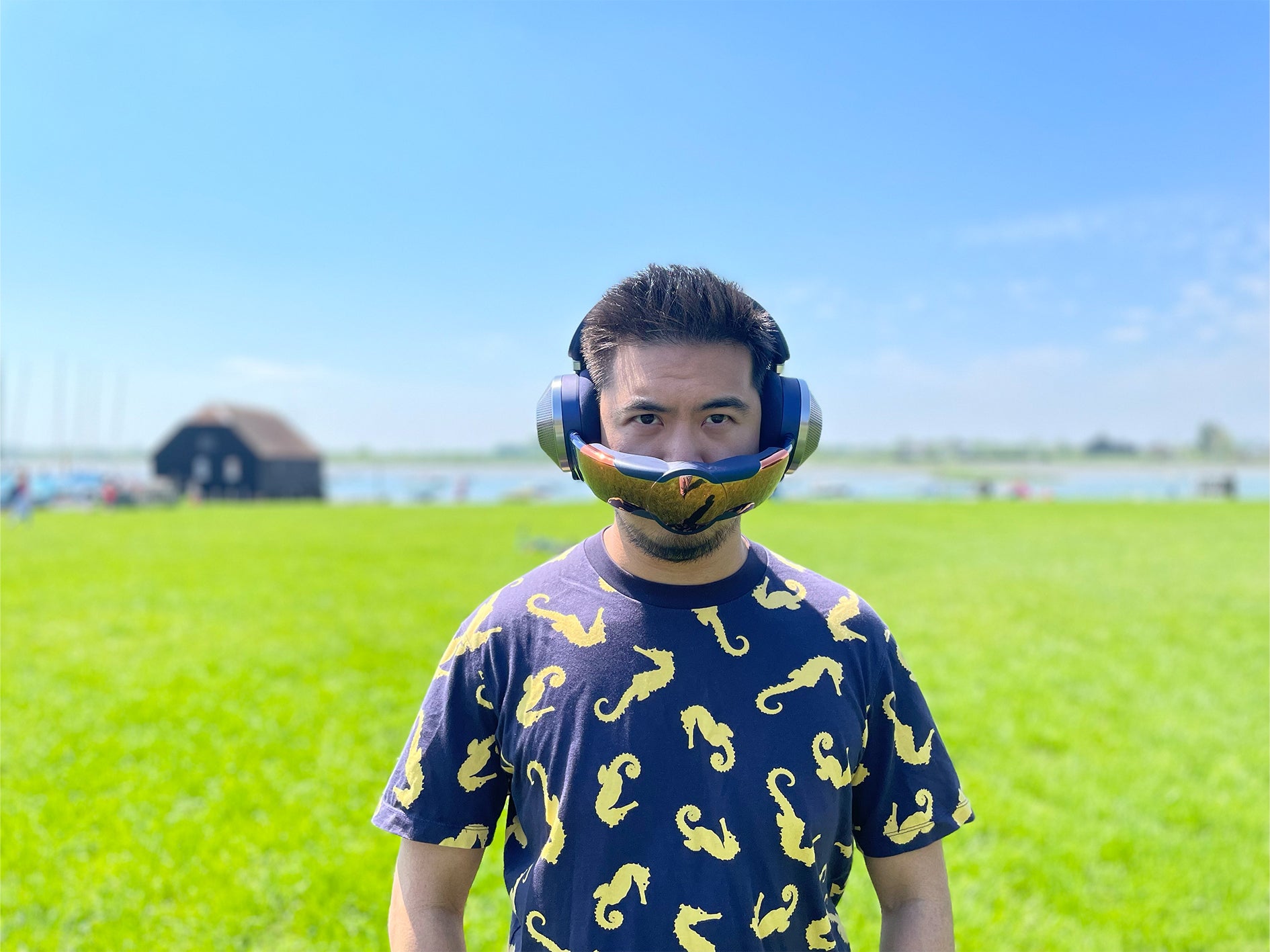
- Type: Over-ear
- Noise cancellation: Yes
- Weight: 595g (headphones), 670g (with visor)
- Battery life: Up to 50 hours (headphones), up to 4 hours (air purification)
- Filter life: Up to 1 year
- Connection type: Bluetooth 5.0, USB-C
- Bluetooth codecs: SBC, AAC and LHDC
- Voice control?: Yes, integrated Siri or Google Assistant
- Pros:Brilliant active noise cancellation, good sound, impressive air purification smarts, comfortable
- Cons: Heavy, should have more sensors, embarrassing to wear, expensive
- Rating: 4/5
The Dyson Zone was such a princess, I had to pick it up from Dyson’s office in London directly, like I was its own personal courier. There, I was set up with the bold machine, taught how to use it to maximum effect, and allowed to whisk it away for good.
No one stares, until you’ve got the visor on
Let’s not beat around the bush, the Dyson Zone headphones are a weird-looking piece of kit. It wouldn’t look out of place in a David Cronenberg film. When you’ve got the entire device on your face, covering your mouth, you’re going to get strange looks. And I did. But as a standalone pair of wireless headphones, they honestly look less imposing and more glamorous than Apple’s massive squared-off AirPods Max over-ears. A little industrial, with some typical Dyson colours to finish it off.
I’m testing the Dyson Zone Absolute+ (£819.99, Dyson.co.uk), a very expensive pair of headphones. Dyson’s pricey product comes with eight accessories, compared with the five included with the slightly cheaper standard Dyson Zone (£749.99, Dyson.co.uk). The Absolute+ comes in a sleek blue and copper colourway – the headband is mostly blue and the visor is mostly copper. It all comes packaged in a binoculars-style case with a strap, so you can swing it onto your back before you go gallivanting into your polluted city of choice. The Absolute+ includes a soft velvet pouch, an in-flight adapter and two extra filters.
These things are heavy – so heavy you could use them as a bookend. With the visor attached, they weigh a whopping 670g. An extra 100g and they’d be double the weight of the AirPods Max, and those already make my head feel lopsided when I wear them. But, strangely, they don’t feel as suffocating as you might imagine, though I do have a pretty big head. I assume it’s because the Dyson Zone doesn’t squeeze against the side of your face, and features a more relaxed fit. You’ll notice them sliding around your head if you haven’t pulled them taut.
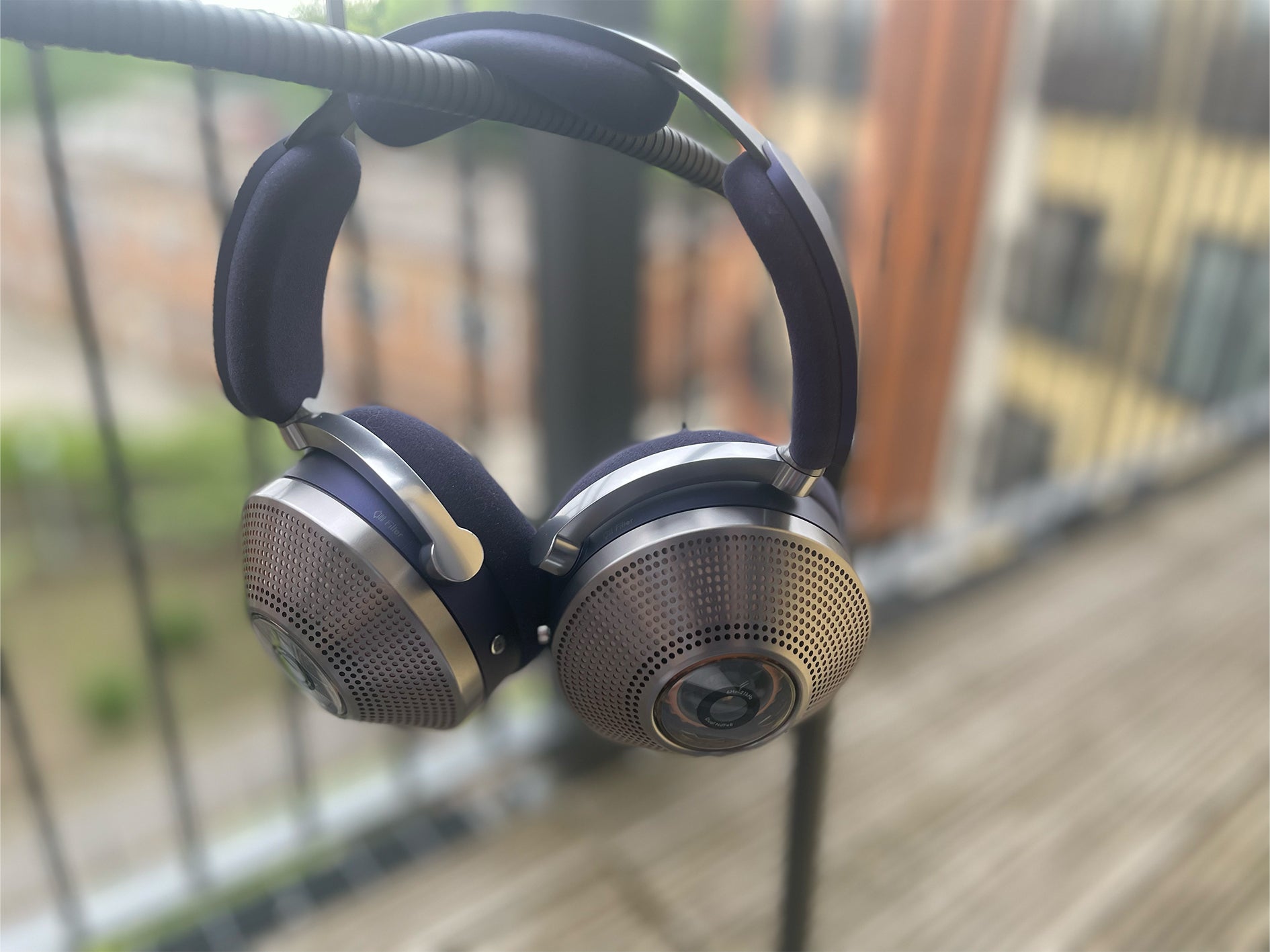
The headband and padded micro suede ear cups are soft and plush, so I didn’t feel any ear pressure with them on, even after a couple hours of wear. Yes, they feel very heavy in the hand, but that heft didn’t translate onto my head. My 4ft 11in mother, however, disagreed. It seemed there was more headphones than mother at one point.
The engineering is mostly achieved in the metallic ear cups, which is why they jut out from your head so much. Inside the cans, Dyson has managed to miniaturise the tech found in its air purifiers. There are small holes punctuated throughout the surface, designed to draw in the air through the spinning motor inside, past the hard two-layer filter, driving the compressor. There’s also a nitrogen dioxide (NO2) sensor and a noise-level sensor inside the ear cups, so you can monitor real-time data.
It’s a technological marvel that Dyson has managed to fit in an air purifier into something that (all things considered) is pretty small. The filters are rated to last a year, based on the air quality in the UK, and are replaceable. They look a little bit like the ones you get in Dyson’s home air purifiers.
The result? A stream of fresh air directed up towards your nose and mouth through the bizarre-looking visor – the centre of attention. The visor magnetically clips onto the circular nobs on the headphones’ metal frame. Pull it up over your mouth and it whirs into life, delivering fresh air. Pull it down, and your music will stop, ambient mode will turn on, and the motor will cease its purr.
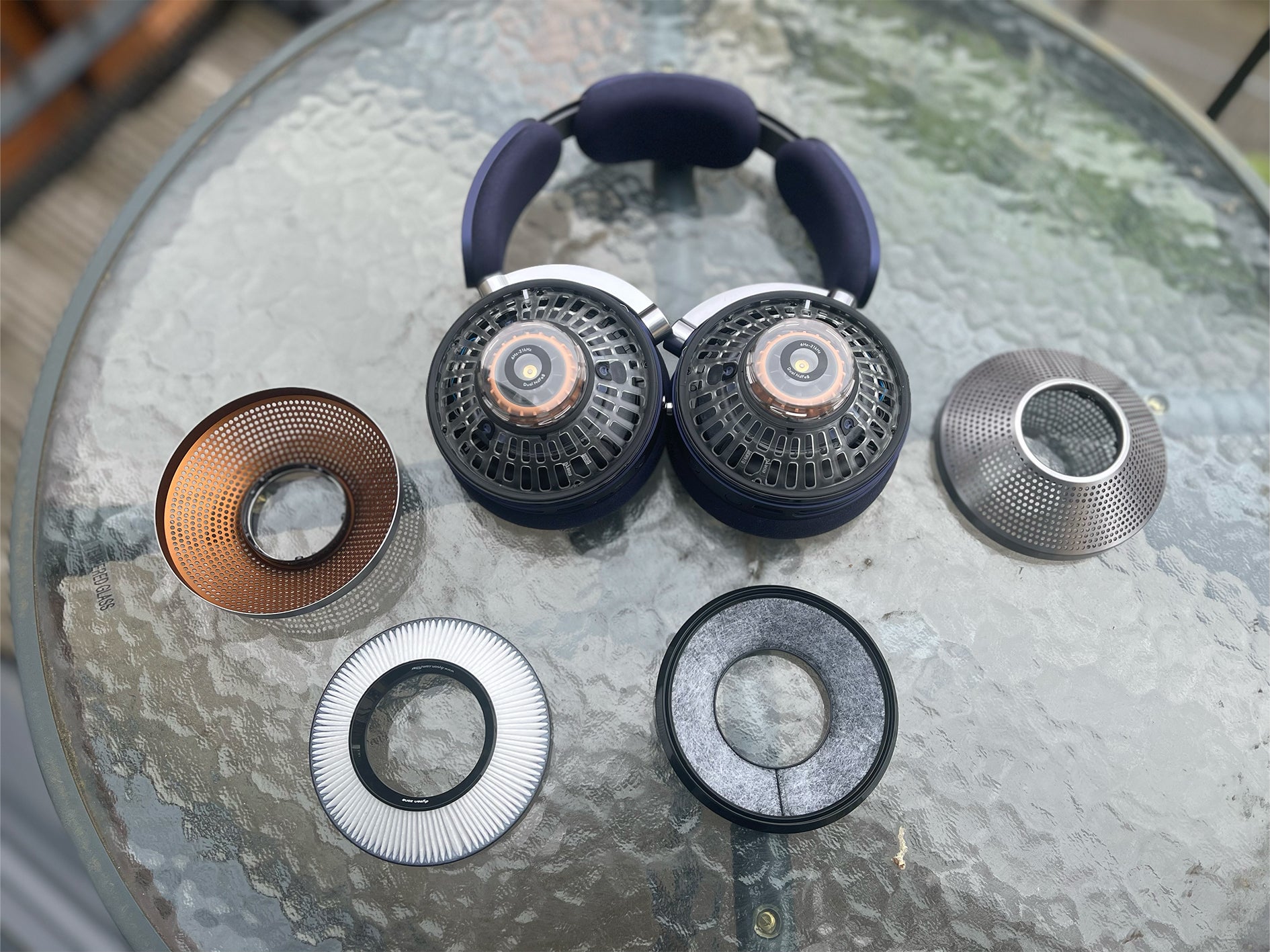
The visor is a wrap-around bit of plastic that’s intended to sit in front of the lower portion of your face. It can be extended out, flipped up or pulled down, so it hangs under your chin, but it never really touches your face. It feels a little fragile, and if I wasn’t careful with this £850 bit of kit, and accidentally sat on it, it feels like the visor might warp or bend or break.
It’s the thing that makes people stare. One man on the London Underground literally turned around on his way off the Metropolitan line to gawk. You’re going to get looks, and if you’re even mildly self-conscious, you’ll be nervous to wear this out. That’s going to be one of the Dyson Zone’s biggest barriers, and it’s a big reason why the Google Glass and its glassholes never took off. Dyson never usually has a problem with design, but the Dyson Zone’s visor might be one difficult sartorial statement for people to pull off.
A breath of fresh purified air
Using the Dyson Zone is incredibly easy. It connects to your phone via Bluetooth 5.0 (fairly archaic in today’s terms, but passable) and requires the My Dyson app. There are only two buttons on each ear cup. The button on the right side contains a small joystick controller for volume, playback and voice assistant controls. The left side acts as the button for power and Bluetooth pairing, but its main purpose is to control the level of air purification streaming out of the visor.
There are four air-flow levels: auto, which reacts to the air quality around you, low, medium and high. The motion sensor inside also ratchets up the air flow if you’re walking fast. Is it loud? Only slightly, but it’s easy to ignore. I had auto on most of the time, and it was about as loud as a rubbish implementation of ambient mode (you know, the hiss you get with cheaper cans) or a desk fan that you’ve put close to your ears on a sweaty summer’s night.
The air purifier never increased its air-flow speed on its own accord. Tests in both Leicester Square never saw auto mode get out of low, so the air quality in the UK might be better than I thought. The air feels cool, almost like an invisible stream of water on the lower part of your face, and you can almost see steam coming out when you’ve got it on high. With the weather heating up, it’s actually pretty cooling, and it removed the stench of manure as I took these out into the countryside.

I can imagine people wearing the Dyson Zone just to cool themselves down as they commute home on the Underground. If they can wear those ridiculous neck fans, maybe they can get on board with Dyson’s device.
I do need to mention two design niggles, and it has nothing to do with their startling appearance, rather visibility and the magnetic implementation. Because the visor isn’t see-through, it does cover enough of your field of view that you lose some of the lower half of your vision. You have to get used to tipping your head down to see below, or flipping the visor down below your chin to get it out of the way. The magnetic implementation also means that when I bent down to pick up my bag with the visor under my chin, the visor swung back up to clip into place across my mouth. At times, it was better just to take the whole thing off than have it dangling across the neck.
The only real control issue I encountered was the glass touchpad on the side of each ear cup, which you use to switch between active noise cancellation and ambient modes. You have to tap it twice, really hard, to get it to register a change. It’s fiddly to learn and doesn’t line up with the soft touch I’m accustomed to when it comes to pressing buttons. Quick, light taps on wireless earbuds are usually how things work.
Once you get the hang of it, it’s weirdly fun to use. There’s a whoosh and a ‘thlunk’ sound effect. Whoosh, like the outside sound is whooshing in, and ‘thlunk’, like sound is being sealed. They’re genuinely pleasing sounds. Like the frisson you get when you hear that Monzo kerching sound effect when your mate has paid you back, or that crackle you get when a Dyson vacuum cleaner picks up crumbs. Satisfying to no end.
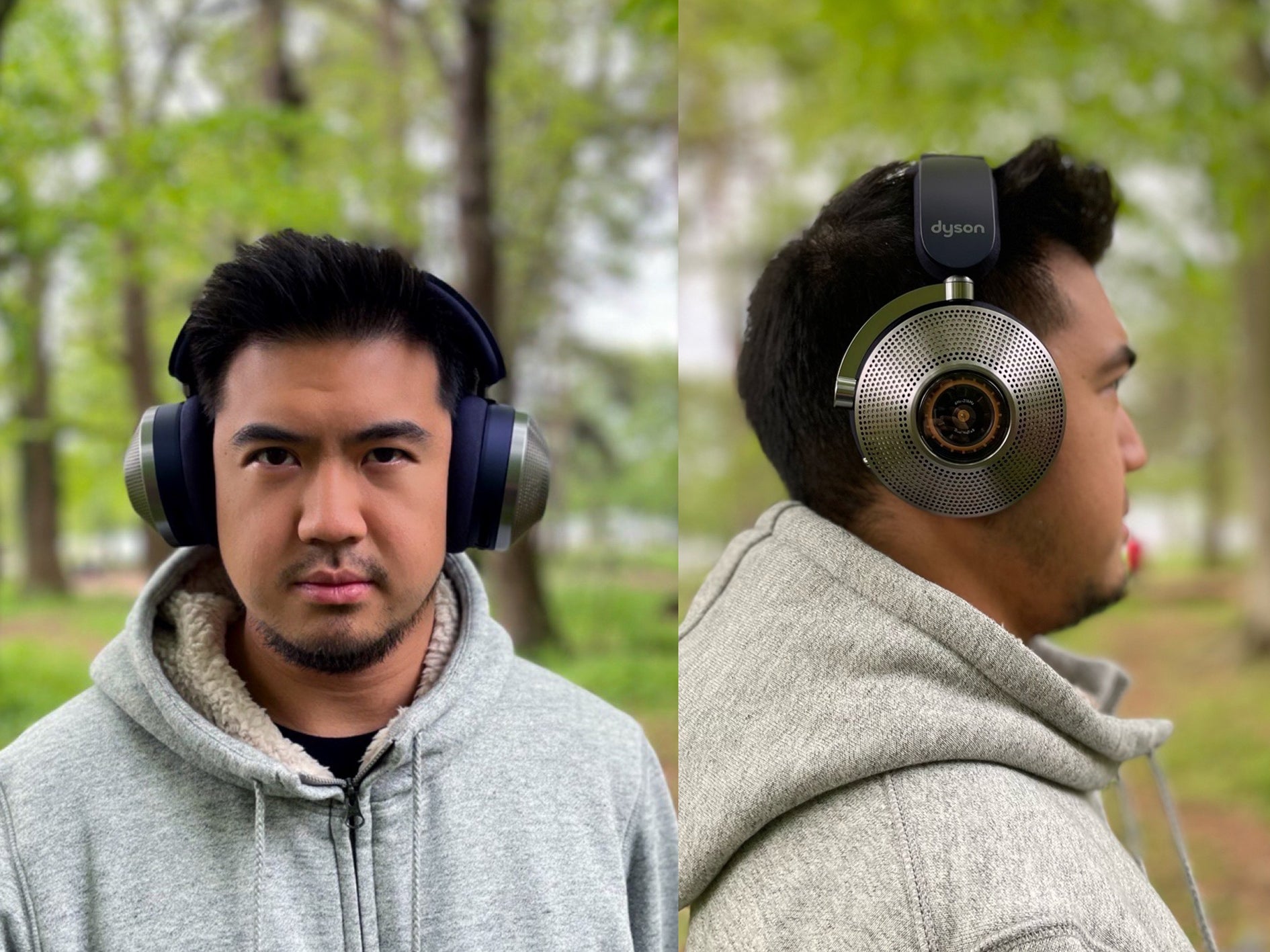
Those air quality and noise pollution sensors I mentioned above become more useful when partnered with the My Dyson app. With the real-time data available on my phone, I could monitor when exactly the NO2 level was high and low. When it’s high, it’s time to get the visor out. The Dyson app scales air quality between 0 and 9, and, despite trying these out across the city, it never went above 1. Good air quality, for reference, is between 0 and 2.9, so with auto turned on, it never left the low air flow speed unless I notched it up myself.
And therein lies one of the biggest disappointments with the Dyson Zone. It’s only equipped with a NO2 sensor, so it’ll notch itself up if it detects combustion gases, such as cooking gases and exhaust fumes. There isn’t a particulate matter (PM2.5 or P10) sensor in the cans, so you’ll have no live data on other pollutants, such as industrial emissions, smoke, candles, pollen and other allergens. While you get average area data in the app, it’s not live, so I had to rely on my own judgment as to when to start purifying the air. As an asthma sufferer and a hay fever faithful, it would have been great to have the data at hand, so I knew when to crank up the power.
The sweet sound of silence
Something else Dyson has focused on is noise pollution, which is why the company included a noise detection sensor in the ear cups. Active noise cancellation on the Dyson Zone is some of the best I’ve tested, and I’ve tested a lot of headphones. High frequency sounds barely snuck through. The headphones were phenomenal, on the same level as, and sometimes better than, the Sony WH-1000XM5 and the AirPods Max. Low and mid-frequency sounds were basically inaudible, and the ambient mode let in a significant amount of outdoor sound, without any annoying hiss from the eight microphones, meaning I could hear a lot while walking down the street.
In terms of sound quality, the Dyson Zone are good-sounding headphones. With angled 40mm neodymium drivers, they’re designed to sound neutral, to be accurate, and well, a little bit boring. Modest. There’s no bombast in Käärijä’s Cha Cha Cha, and Youth Lagoon’s Prizefighter is a natural-sounding track with these over-ears. That’s how audiophiles would say your music is supposed to sound, but if you want something richer, crisper and more curved, you’ll have to turn to the equaliser.
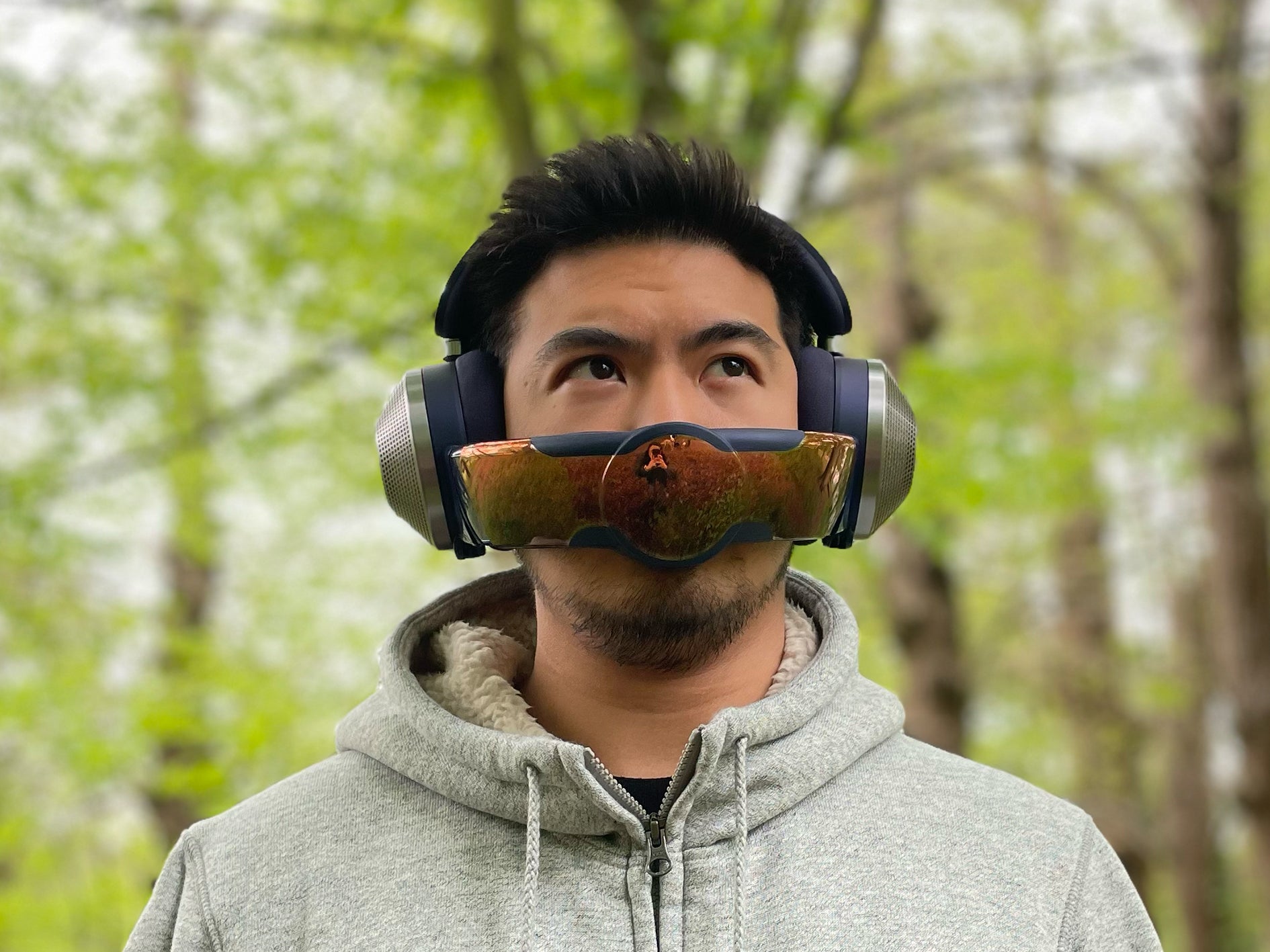
The equaliser’s hidden in the app, but it’s pretty basic. Accessed through the active noise cancellation settings, you can switch between neutral, enhanced and bass boost profiles, but those looking to customise the sound to any degree will be sorely disappointed. While bass boost did give more of a sense of excitement to MØ’s Final Song, there was still a sense of balance that didn’t quite give me the oomph in the bass that I get with the Bose QC45’s or the Sony WH-1000XM5.
If you pump up the volume, there’s a bit more dynamism. Arguably, the best mode is enhanced, which gives the crispness desired in the treble, helping the vocals and synths on Chvrches’s The Mother We Share really come to life. It’s quite a surprise, really, as I’m used to brands moulding their sound to fit what’s popular in the market. While you’re going to get an extremely faithful reproduction of your artist’s favourite tracks with the Dyson Zone, some will want more oomph from the default setting.
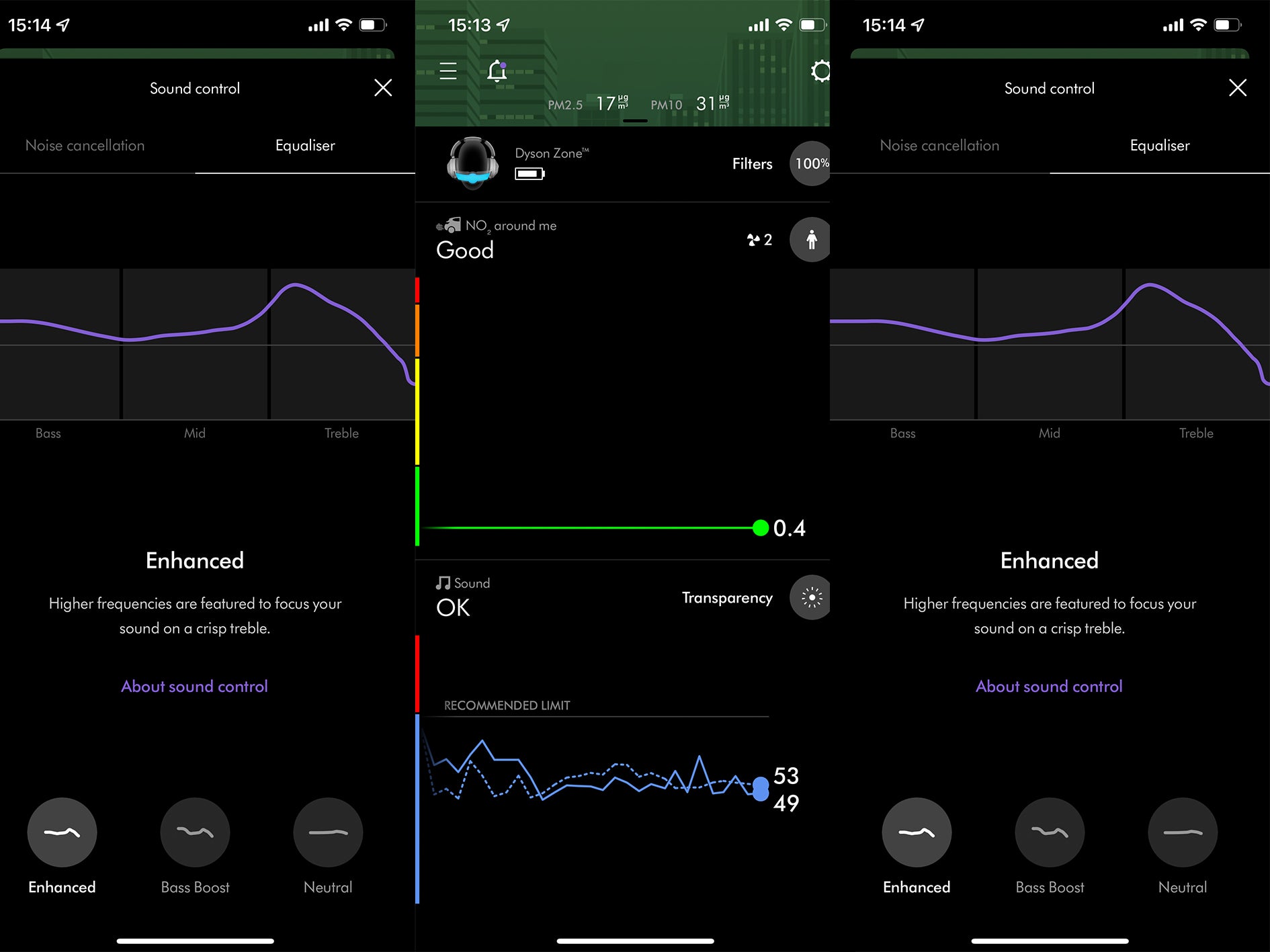
Frustratingly, the headphones don’t seem to have multipoint connectivity, meaning you can’t connect the headphones to two devices at once, and switch between them seamlessly – a pretty common feature in most high-end headphones released after 2021. That means you do have to manually switch the audio source in the Bluetooth settings. The Dyson Zone is also supposed to turn off automatically when you take them off your head and give them a rest, but I found that, on occasion, I’d come back the next day, and the battery would be out of juice. The auto-pausing sensors work wonderfully, mind.
It also takes a while to charge. From zero, it takes three hours, and if you’re using the visor, you’ll be charging this thing a lot. You only get four hours of use with this on the lowest air flow setting, 2.5 hours on the medium level and just 90 minutes with the highest air flow. You get 50 hours if you’re just using the headphones, however, and that’s a pretty good battery life. Updates take a while, too, so make sure you’ve allotted some time, because the prompt asks you to stay in the app, and I was stuck in it for about 25 minutes.
The verdict: Dyson Zone
Some gadgets leave a mark on the world for being revelatory. The iPhone, for instance. Some are mocked so hard, they leave with their tails tucked between their legs – such as the Google Glass. The Dyson Zone could go either way.
Look, this thing is weird, but it has a sense of charm. A wearable air purifier is genuinely innovative, and is tackling an enormous problem that is predicted to get worse. It works incredibly well, and despite some very minor design niggles, is engineered with brilliant quality. That visor just clips on without fuss.
As headphones, they offer class-leading active noise cancellation, and while some might not enjoy the sound, it’s very balanced indeed, and will make your tunes sound the way the artist intended. They’re stylish and good-looking. I do wish there were more sensors in the headphones, especially for hay fever sufferers, but for a first device, Dyson’s done pretty darn well. There are two stumbling blocks, however. Firstly, the Dyson Zone’s price – these are expensive, and not many people are going to be willing to splurge out £819.99 for a pair of headphones that make you look a little ridiculous.
That, well, off-putting design is the second stumbling block, but where the Google Glass looked dorky and dumb, the Dyson Zone has this edge of cool. We’ll have to see if people take to it. If not, just call me a Zonehole, I’m a fan. Just don’t ask questions if I’m hiding behind a newspaper at the same time.
Voucher codes
For the latest offers on headphones, try the links below:
Enjoy a breath of fresh air with the best home air purifiers
